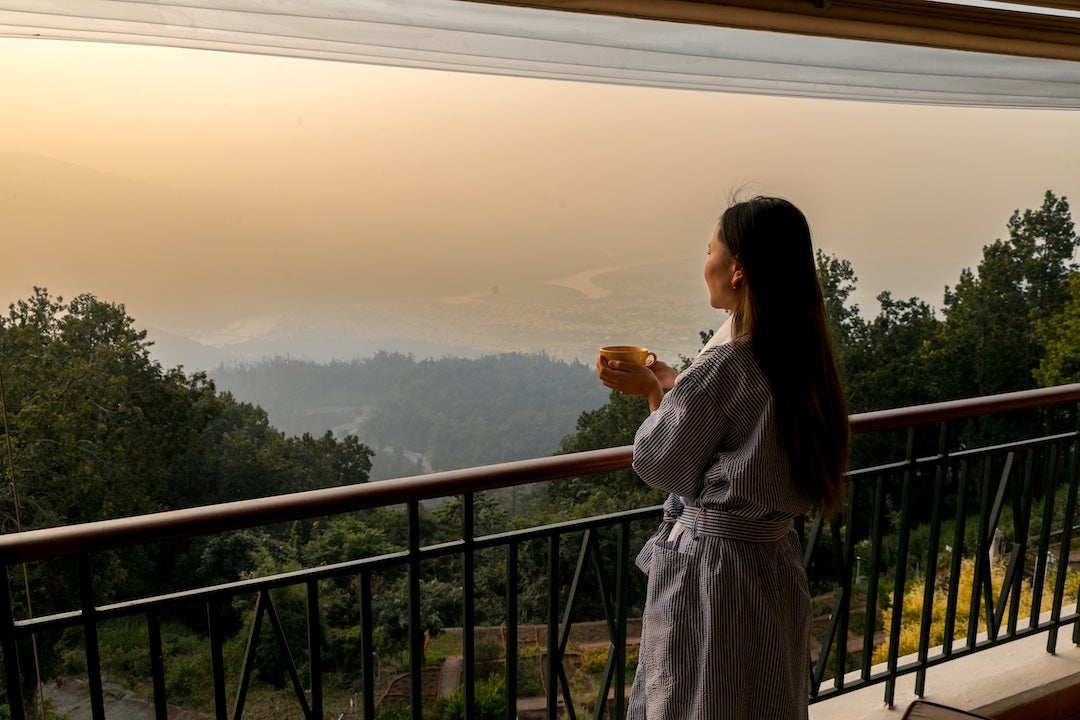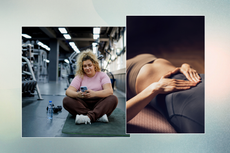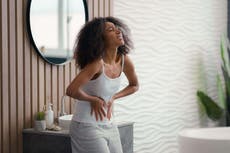I’ve lived with painful periods for 20 years, could ayurveda be the answer?
After decades of pain, I checked into a health retreat in India to put Ayurvedic wisdom to the test

My period and I have long been incompatible bedfellows. It’s an uneasy alliance that has shaped much of my adult life. This isn’t journalistic hyperbole; it’s a stark reality that has coloured every month of my life since turning thirteen. I wasn’t exaggerating when I had to take a day off each month at school, though I often felt the silent scepticism of teachers and classmates as they rolled their eyes.
From the very beginning, my period has been more than a minor inconvenience. It’s been a relentless monthly battle with pain that leaves me doubled over, nausea that makes me lightheaded, and cramps so severe they’ve left me comatose in bed.
Now, despite approaching forty, the pain shows no sign of diminishing. Just last summer, while in the car with my mum, I saw the alarm flicker across her face as I explained that my laboured breathing wasn’t an attempt to stave off motion sickness, but rather a desperate effort to endure the agony of the first day of my period.
Then there was the morning walk just before Christmas when the pain was so sudden and sharp that I can only liken it to the sensation of being winded, and I nearly had to call my best friend to pick me up and take me home. Each month, my boyfriend knows to arm himself with a hot water bottle, strong painkillers, and a bar of chocolate – the only survival kit that touches the sides of yet another round of suffering.
Like me, millions of women in the UK suffer from severe period pain, yet our struggles are often overlooked. A staggering 51 per cent of women feel their healthcare providers fail to take their pain seriously amounting to 6.2 million women whose suffering is routinely dismissed. The economic toll is just as significant – a recent report revealed that the cost of women missing work due to menstrual health conditions, whether from painful periods, endometriosis, fibroids, or ovarian cysts, amounts to an astonishing £11 billion annually. And still, we’re ignored.
I’ve tried everything: inconclusive ultrasounds, dismissive doctors, and two decades of reliance on birth control pills, until I began to question whether artificially manipulating my hormones for more than half my life was really the answer.
After yet another consultation, this time with a female doctor who told me my pain didn’t give her cause for concern and therefore required no further investigation, I decided to look elsewhere for answers.
My search led me to Ananda in the Himalayas, a sanctuary of ayurvedic wisdom and holistic healing. Their menstrual health program is designed to balance the body from within, treating disorders such as heavy or irregular periods, endometriosis and PCOS (polycystic ovarian syndrome). If modern medicine has failed to offer me meaningful relief, I figured why not try something more ancient, intuitive and aligned with the rhythms of the body.
Ayurveda, one of the world’s oldest holistic healing systems, originated in India over 5,000 years ago. Rooted in the idea of balance between mind, body and spirit, it seeks to prevent illness rather than simply treat symptoms. It categorises individuals into three doshas: vata, pitta and kapha. Each dosha is associated with different physiological and emotional traits. Menstrual health, according to ayurveda, depends on aligning these energies and removing accumulated toxins that disrupt the natural flow of the body.
Read more: I tried a Temazcal ceremony and my sweat lodge experience was nothing like your average sauna
For me, ayurveda’s philosophy makes sense. Western medicine has offered me painkillers and hormonal treatments, but it has never addressed the root cause of my suffering. ayurveda, on the other hand, sees menstruation as a vital detoxification process, a time when the body naturally sheds excess heat and toxins. If this process is hindered, imbalances arise, leading to painful cramps, bloating and fatigue. ayurveda doesn’t just treat the pain; it seeks to understand why it’s happening in the first place.
Painful periods, a condition the NHS calls “dysmenorrhea” is known as kashta-arthava in ayurveda. Dr. Naresh Perumbuduri, a senior ayurvedic physician at Ananda tells me that kashta-arthava is often linked to imbalances in the vata dosha. Factors such as poor sleep, stress, irregular eating habits, excessive exercise and environmental toxins can aggravate vata, leading to painful menstruation. In some cases, dysmenorrhea may also be associated with conditions like endometriosis, pelvic inflammatory disease or uterine fibroids. During my time at Ananda, Doctor Shweta Kushwaha suggested that for me, high stress levels and lack of sleep are the main triggers.
Perched in the foothills of the Himalayas, overlooking the sacred Ganges River, Ananda’s setting alone is a balm for the soul. I’m met with misty peaks, crisp mountain air and an unshakable sense of stillness. The retreat offers several tailored wellness programs, from stress management to sleep enhancement. Its ayurvedic approach to menstrual health, the programme I’m signed up for, aims to reset the body through diet, therapies, and mindful practices. The programme is 14 or 21 days long but I’m staying for seven and hoping I’ll feel the benefit.
Before flying to India, I filled out a questionnaire covering everything from my sleep habits to how easily I digest food. And shortly after arriving, Doctor Kushwaha, an ayurvedic physician, asks me more detailed questions about my lifestyle and menstrual cycle. I learned that I have a pitta imbalance, so my treatment plan was designed to cool, soothe and cleanse.
One of the foundational principles of ayurveda is that “like increases like,” and opposites balance. Because pitta dosha is hot, sharp and oily, it benefits from cooling and soothing practices. I started each morning with a hatha yoga class or a 2km swim in the temperature-controlled pool perched on the hillside. Breakfast was small but nourishing, stewed apple followed by a rice dish with coconut chutney. I was advised to cut down on my water consumption (I habitually drink upwards of 4 litres a day) and instead sip room-temperature or warm water with my meals.

On my first day, I met Dr. Jitendra Uniyal, a renowned specialist in alternative healing. He took my pulse, examined my ears and tongue, and immediately noted that I was a poor sleeper who often skipped breakfast – issues we would work on over the next seven days. Each day, I had hour-long acupuncture and cupping sessions with him. I’d never tried acupuncture before, but every session lulled me into an almost dream-like state, leaving me with an overwhelming sense of calm.
At the beginning of our final session together, I found myself unexpectedly tearing up. Being so well cared for might be standard at a place like Ananda, but it’s a rare luxury in everyday life. My whole body felt different, charged with a subtle, simmering energy, and for the first time in years, I was overcome with an undeniable sense of peace.
The other treatments were just as good, though slightly more indulgent and included reflexology, an amethyst facial, and near-daily massages, each carefully selected from an extensive ayurvedic menu designed to reduce water retention and eliminate toxin buildup.
There was also a session with Blossom Furtado, an emotional wellness consultant specialising in everything from clinical hypnotherapy to past-life regression. Our 75-minute session stretched into nearly two hours as we covered everything from past relationships to my current one with myself – both of which, she noted, could use some improvement. Her advice for dealing with monthly cramps? To thank my body for looking after me but to tell my period pains they’ve done their job. More woo-woo than science-backed, but at this point, I was willing to try anything.
For fellow period pain sufferers, Doctor Kushwaha emphasises the importance of a vata-balancing diet, something that can be easily incorporated into your daily routine at home. Nourishing foods like healthy fats, complex carbohydrates, and warming spices such as cumin, ginger and cinnamon can support overall wellbeing. Kushwaha also suggests that cooking with ghee and drinking herbal infusions, like fennel or star anise tea, can also help regulate the menstrual cycle and ease discomfort.
I’ve carried on some of the ayurvedic practices beyond Ananda, like cutting my caffeine intake to one cup of coffee a day (though it was strictly off limits during my stay), switching all my tea to decaf, and adding a teaspoon of coconut oil to my coffee to counter its drying and acidic effects. I’m also doing my best to eliminate canned foods – soaking beans takes a little extra time – but in ayurveda, tinned food is said to increase dullness and heaviness in both body and mind.
Read more: I went on my first wellness retreat, and it wasn’t what I expected at all
Beyond diet, simple lifestyle changes can have a profound impact, according to the team at Ananda. Gentle yoga, pranayama (breathwork), and warm baths can help calm the nervous system and promote relaxation. Self-massage with warm oil (abhyanga) is an accessible ayurvedic practice that encourages circulation and reduces tension. A nightly foot massage from my boyfriend has been the best ritual I’ve taken home with me. It’s said to help ground energy, and support deep, restful sleep, and as I like to remind him, it’s an essential wellness practice rather than me just finding an excuse for a foot rub.
While day-long detox treatments like the panchakarma I experienced are typically done in specialised settings, small detoxifying rituals such as dry brushing, staying hydrated, and prioritising rest during menstruation, I learned, can be just as beneficial.
By the end of my stay, I felt a profound shift. My body was lighter, my digestion more efficient, my mind clearer. I had lost a kilo of water weight, and though it was too soon to tell whether my period pain would be permanently alleviated, something felt different. I had spent years resenting my cycle, viewing it as an enemy to be subdued. Ayurveda had taught me to see it differently: as a message from my body, a call to slow down, cleanse and listen.
On my final day at Ananda, with pitch perfect timing, my period arrived. But this time it felt like a small stirring in my belly, a slight flicker of discomfort, as if the pain barometer had been dialled down from ten to two. Instead of being immobilised, I took an early morning yoga class, followed by a 2.5km swim. It wasn’t a miracle cure, but for the first time in decades, I didn’t feel at war with my own body. And that, in itself, felt like a breakthrough.
Read more: Agadir is a haven for health-conscious travellers and the perfect wellness getaway




Join our commenting forum
Join thought-provoking conversations, follow other Independent readers and see their replies
Comments